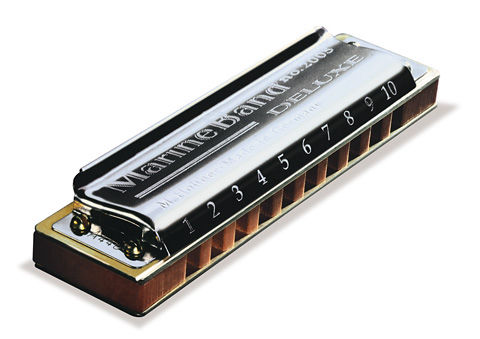

Welcome to this harmonica lesson. Remember that this lesson is part of my on demand harmonica class, the harmonica mentoring program that allows you to schedule your learning path balancing between real time lessons with the teacher and self paced study.
Now you can learn online using Skype or Hangouts, as well as following some emailed lesson that will keep you on the learning track while saving money.
What you will learn in this lesson :
• We will learn two new exercises
• We study a new 1st position song
• We continue practicing single notes with tremolo
Let’s start : Get to know our instrument.
The harmonica is a wind instrument that contains 20 reeds. 10 of them vibrate when you blow in the corresponding hole and the other 10 when you draw. When a reed vibrates you get a note.
When you buy a harmonica you can get it in different keys : there are basically 12 keys, one for each half tone (the minimum distance between two notes in our tonal system). The notes on the various harmonicas change with the key, but the distance between each note is always the same. For this reason, when you play a phrase on the instrument, it has the same meaning when you change harmonica and play the same holes. This is an advantage, because once you learn how to play something, if you want to change key (because for example the band wants to) you simply get a different harmonica and play exactly the same holes you are used to.
The diatonic harmonica is so called because the note’s layout on it follows a major scale schema. Take a look at the image :

Assuming that we use a C harmonica, the notes on the blow side are all part of the C major chord, this is why when you blow in the harp it sounds always good if you are playing on a C backing track or alone. In the center of the instrument, holes 4 to 7 you will find all the notes of the key scale, in this case the C major scale that contains C, D, E, F, G, A, B.
If for instance you take a different harmonica, let say for example a A harmonica, in holes 4 to 7 you will find the notes A, B, C#, D, E, F#, G#. These notes are part of the A major scale.

The absolute pitch of the notes changes, but the relative one is the same. Without going too deep in the details, you should now know that when you get a certain harmonica it will sound good when played on the same key but also on other key. When you play the harmonica in the same key of a song you are playing in FIRST position.
If you look at the following image you will notice that some notes are missing, for example on the left side of a C harmonica we miss F and A: in order to play these notes we need to apply the BENDING technique. This willbe part of another lesson.

The correct breathing for playing : The harmonica is a wind instrument, so the way we breathe has an enormous affect on the sound we get from it.
The breathing process that we have to learn is a natural air movement, that goes through the harmonica which makes the reed vibrate to produce the sound. Proper breathing includes the use of the diaphragm, a muscle that is located in the lower area of the trunk and that allows us to expand and to contract the air filling zone. Diaphragmatic breathing is the same we learn in meditation techniques, in the study of singing or other pratices.
As we breathe, we need to be relaxed at the neck level, the jaw and trunk area. The diaphragm is used to control both the in and out air flow, and consequently the sound we emit with the harmonica.
Now learn to breathe correctly : Make some slow and long inhalation and let ou rbellie sswell, then exhale slowly. Maintain a relaxed status while breathing and leave the air flowing all along the chest, imagining a tube that connects our mouth to the stomach.
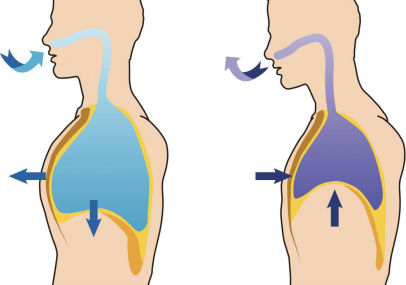
How to hold the instrument in your hands: We can hold the harmonica with the left hand, with the right hand or both.While we play we can also switch the instrument from one hand to the other, to be more comfortable during some passages. Form with the fingers a sort of elongated C and the middle finger acts as a block behind the harmonica. Support the harmonica without pressing too much with our fingers and keeping relaxed the muscles of the arm and shoulders.
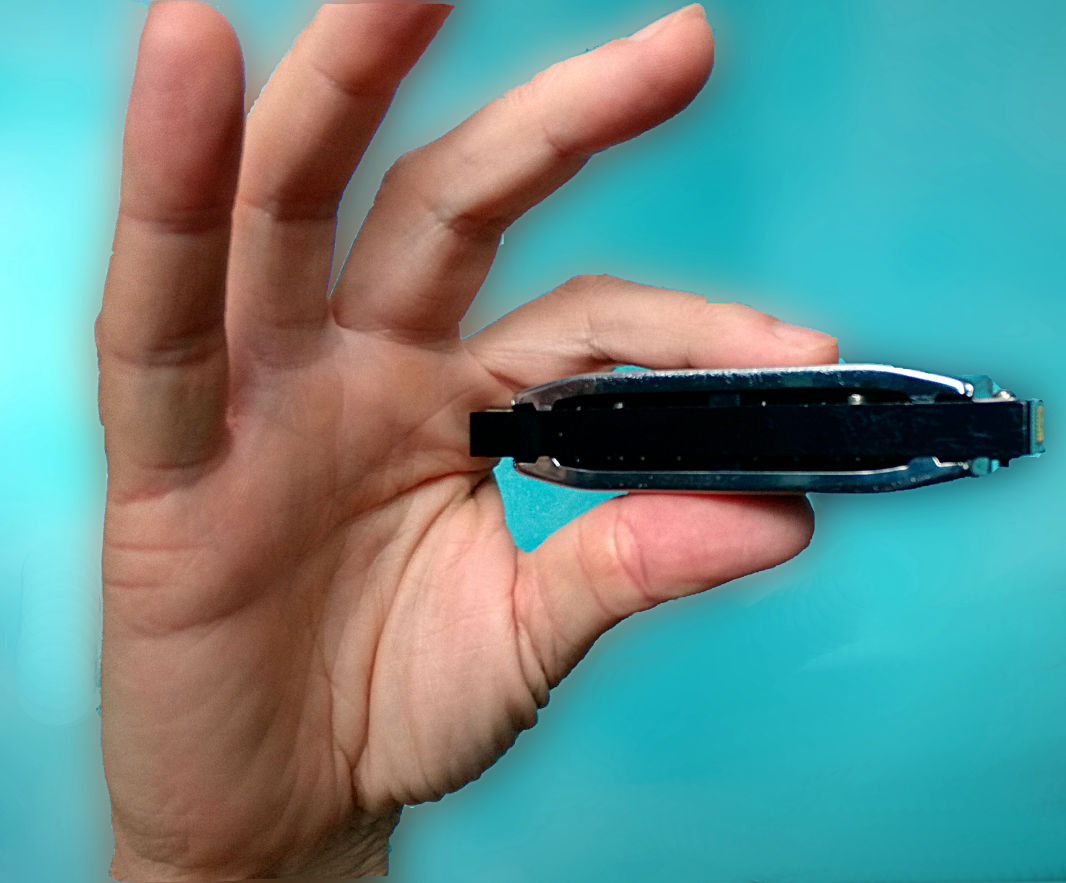
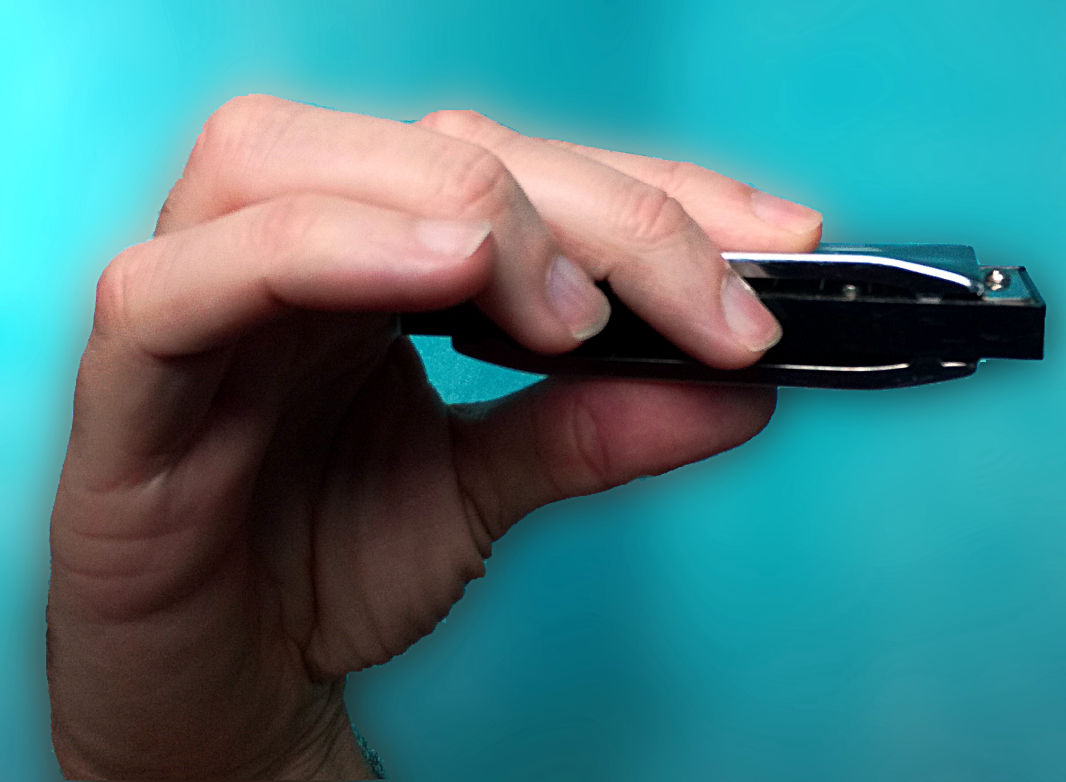
Which is the correct embouchure : We bring the harmonica to the mouth and hold it parallel to the floor. The harmonica must remain straight on all axes. With our lips we seal the harmonica surface to prevent air leaking out of the instrument. The front surface of the instrument shall be sufficiently wet to allow the lips to slide.

How to use your tongue on the harp: Depending on which side of the instrument you are playing, the tongue should be positioned in a hole with the tip, or on two-three holes, or again on the right side of the mouth. Tongue blocking technique requires good management of our tongue.
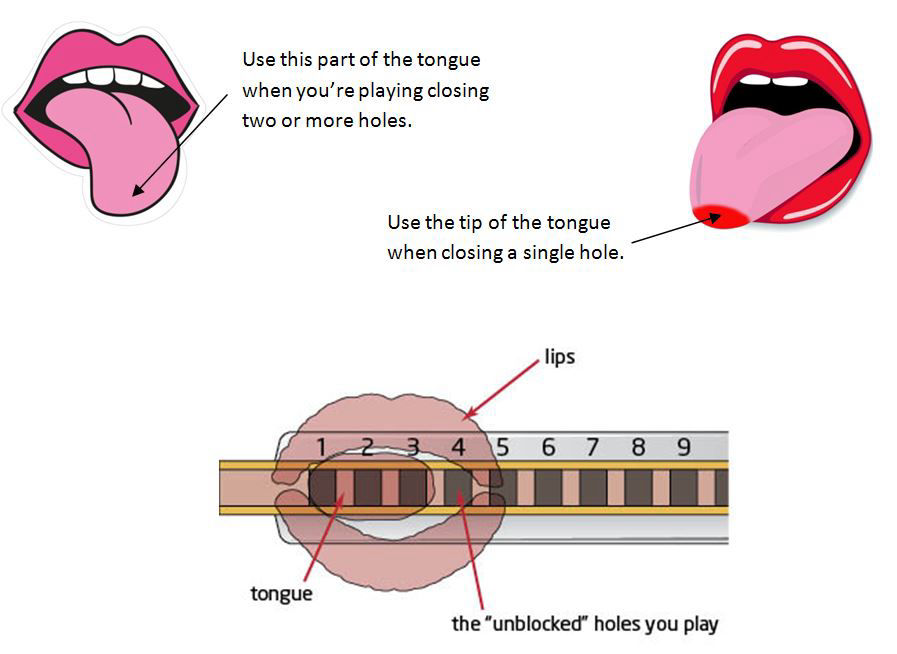
Reach me here:
Email: suonando@yahoo.com
Facebook: Click here!